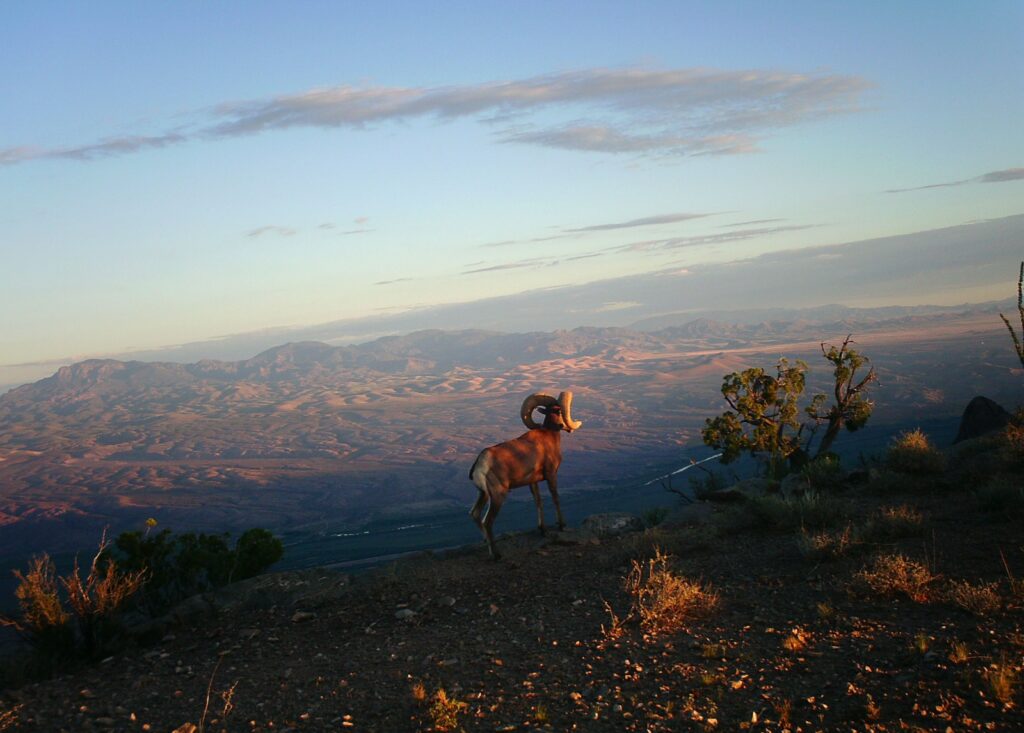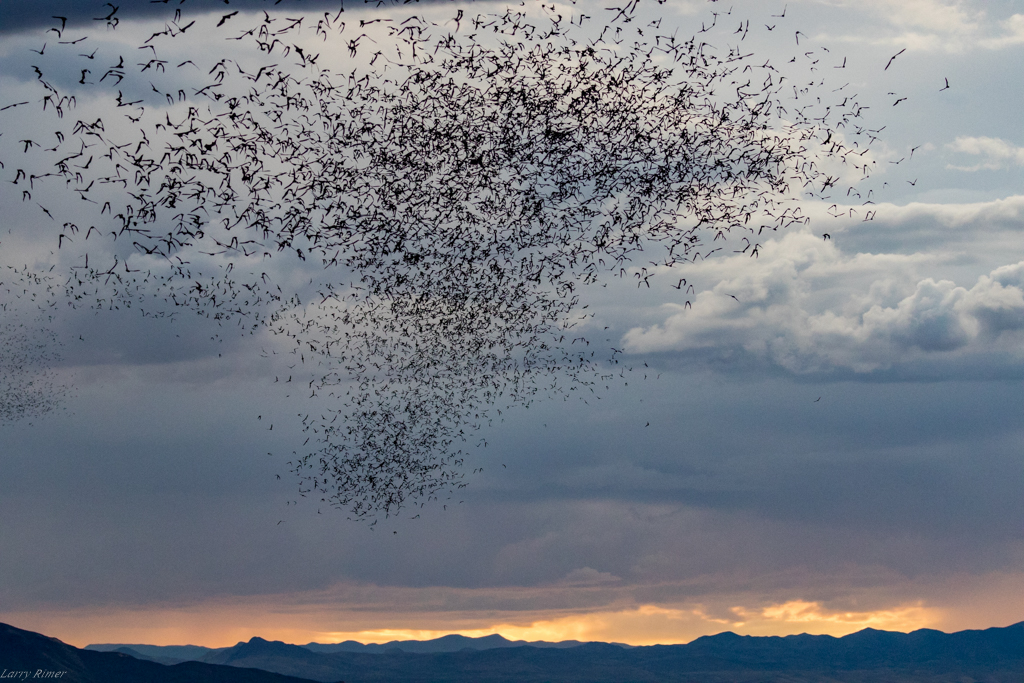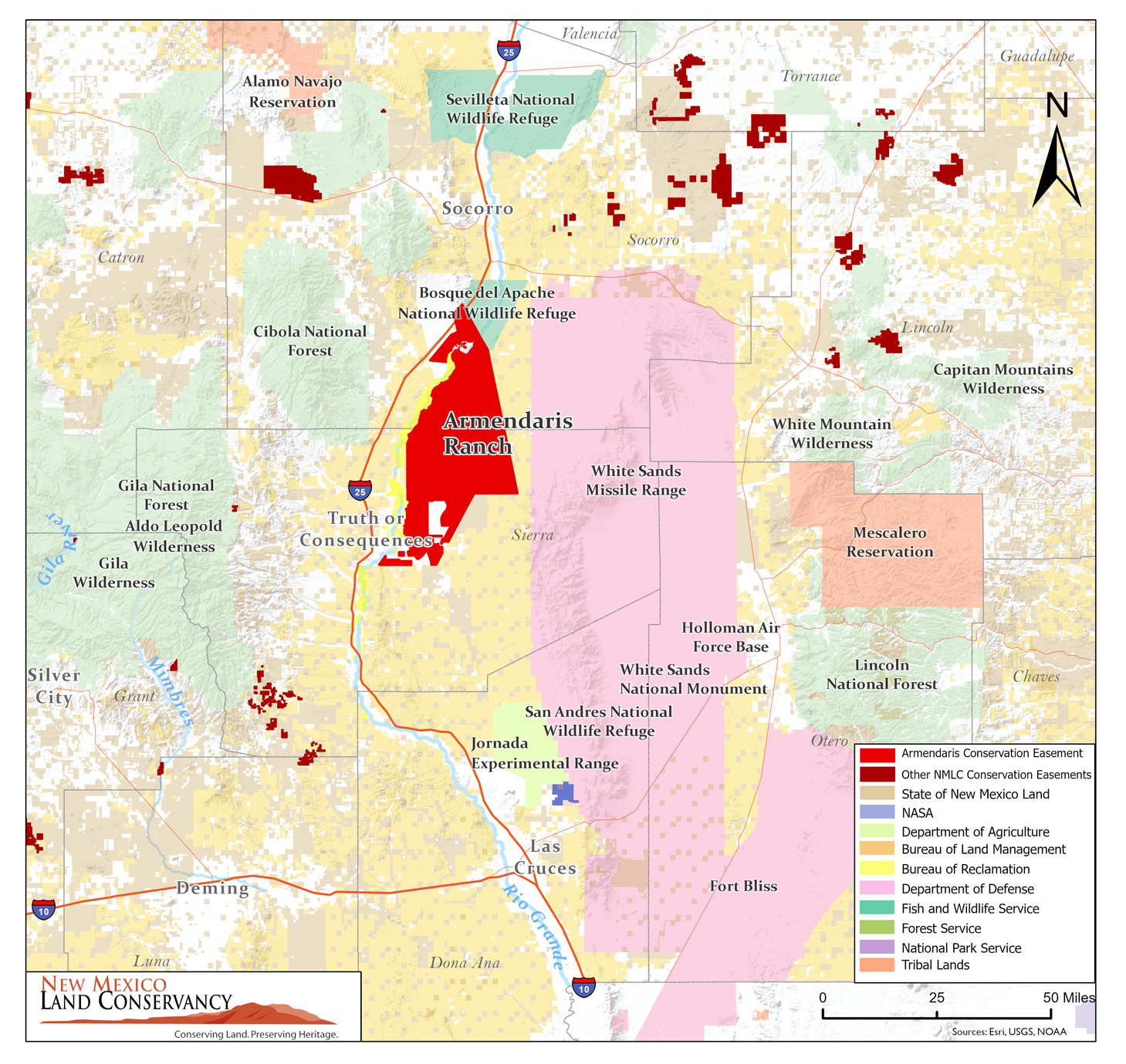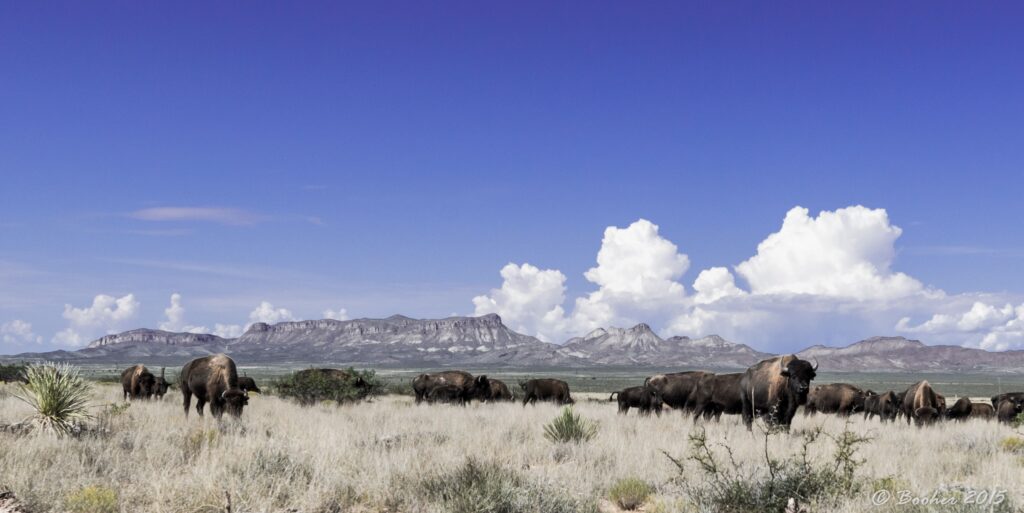315,000 acres permanently conserved on the Armendaris Ranch in New Mexico

Big Horn Sheep on the Armendaris Ranch. Photo courtesy of Turner Enterprises, Inc.
March 17, 2022
The New Mexico Land Conservancy and the Department of Defense recently completed one of the nation’s largest conservation easements at the Armendaris Ranch in southern New Mexico. Located in Socorro and Sierra counties, the Armendaris Ranch is owned by Ted Turner.
Ron Troy, the New Mexico Land Conservancy’s Southern New Mexico Program Manager and project lead, said:
“This land is laden with important and unique natural and cultural resources, and the opportunity to permanently protect a property with conservation values of this magnitude was at the heart of our organization’s decision to tackle this landscape-scale project.”
The Armendaris Ranch stretches along the Rio Grande from the Bosque Del Apache National Wildlife Refuge at its northern border, then south along the river for almost fifty miles to the southern end of Elephant Butte Lake near the town of Truth or Consequences. From the river and lake, the land extends east past the Fra Cristobal Mountains towards the San Andres Mountains and the White Sands Missile Range.
Part of the Chihuahuan Desert ecoregion, the sheer size and geomorphological variability of this land supports over 500 vertebrate species, including some identified as federally or state listed species. The entire Fra Cristobal Mountain Range is part of this vast landscape and is home to approximately 230 desert bighorn sheep. There are large lava fields that include the Jornada caves, which serve as a seasonal/migratory haven for over one million bats of various species.

The Jornada Caves on the ranch support more than one million bats of various species. Photo courtesy of Turner Enterprises, Inc.
The cultural values of the land are noteworthy as well. Recently discovered ancient footprints found less than 40 miles away (near White Sands National Park) demonstrate human activity in the area going back at least 20,000 years. Also, there is evidence of at least 10 different indigenous cultural periods, dating from 11,000-year-old Clovis points to pre-Colombian rock art to historical accounts of Puebloan, Mimbres, Navajo and Apache life in this seemingly harsh landscape. The borders of the land encompass a rich modern history as well, including the harshest section of the El Camino Real known as the “Jornada Del Muerto”; Valverde, the site of the largest Civil War battle fought in the Southwest; at least 20 abandoned town sites; and transportation routes between Los Alamos and the Trinity Site for atomic bomb testing as part of the Manhattan Project.
The conservation easement will be held by New Mexico Land Conservancy and will protect the land’s conservation and cultural values, while also permanently restricting certain uses of the land to keep it intact and relatively undeveloped.
The land includes a large part of the western buffer of the White Sands Missile Range, and therefore was highly desirable for protection by the U.S. Army, which administers the two-million-acre range. The conservation easement was partially funded through the Department of Defense (DOD) Readiness and Environmental Protection Integration (REPI) Program. REPI is a unique DOD program that works to protect high-priority military missions by helping relieve or avoid land-use conflicts near military facilities, promote natural resource conservation and habitat protection to mitigate restrictions that inhibit military activities, and prepare for climate change impacts by enhancing military installation resilience.

Nearly 830,000 acres have been protected under the REPI Program since itsinception in 2002. This conservation easement is the largest to ever be completed by any of the four military branches under the REPI Program.
“Completion of this historic project has been a very high priority for White Sands Missile Range,” said Brian Knight, a Senior Team Manager with the U.S. Army. “A large portion of this conservation easement is in an area WSMR refers to as the Western Call Up Area, which is restricted airspace that WSMR can ‘call up’ in order to extend our military test and evaluation capabilities. Working with our neighbors to create compatible land uses and minimize any encroachment to military airspace will sustain the unique capabilities that make WSMR the premier test and evaluation range in the country.”
This easement is also the largest completed to date by the New Mexico Land Conservancy and nearly doubles the acreage of its 115 conservation easements from 340,000 acres to 655,000 acres of conserved land throughout New Mexico and southeast Arizona.
“The permanent protection of this land presented a unique and timely convergence of interests between the various partners involved,” said Scott Wilber, the Conservancy’s Executive Director. “This is truly a win-win-win project for wildlife, the people of New Mexico and our national security.”
###
The New Mexico Land Conservancy (NMLC) is a statewide, non-profit land trust that works to conserve land, water, natural and cultural resources at community, watershed and landscape scales throughout New Mexico and southeast Arizona. In 2005, NMLC set forth the ambitious goal of protecting one million acres of high-conservation value land, directly or in partnership with others, by 2030. To date, NMLC has completed 115 conservation easements over 655,000 acres of land, so it is well on its way to achieving this goal. For more information, please visit the organization’s website at: www.nmlandconservancy.org.
Initiated by the Department of Defense in 2002, the Readiness and Environmental Protection Integration (REPI) Program promotes and supports partnerships among the military services, private conservation groups, and state and local governments. These win-win partnerships preserve compatible land uses, protect natural habitats, and promote climate resilience near installations and ranges that help sustain critical, at-risk military mission capabilities.
Bison roam the Armendaris Ranch. Photo courtesy of Turner Enterprises, Inc.


